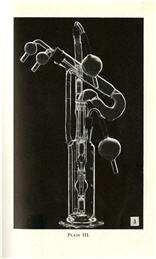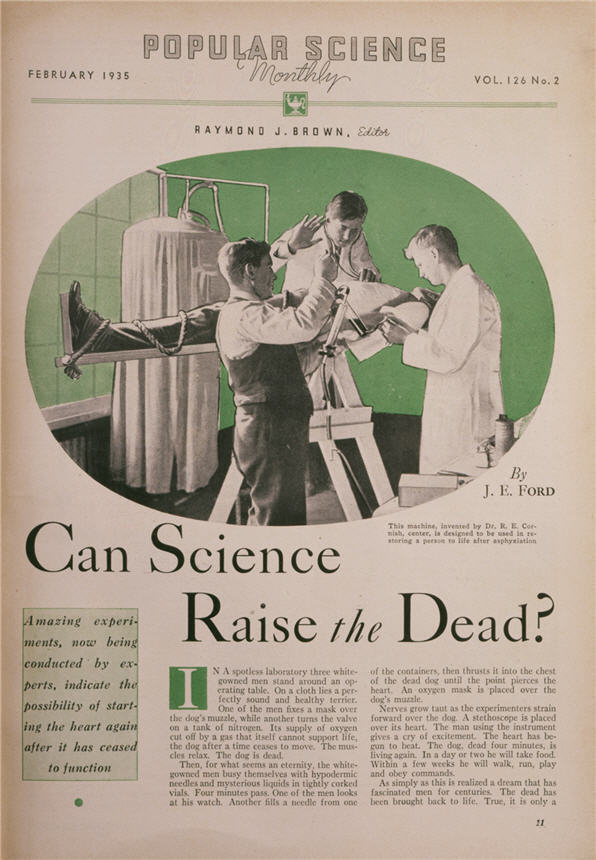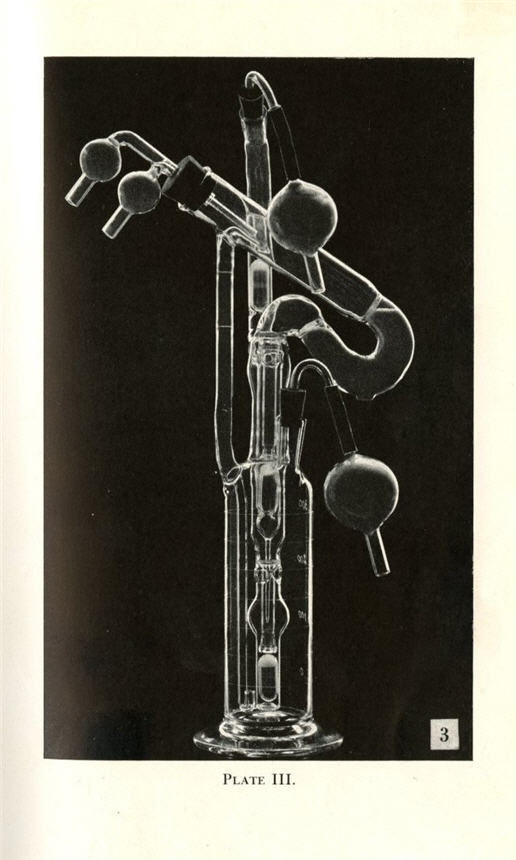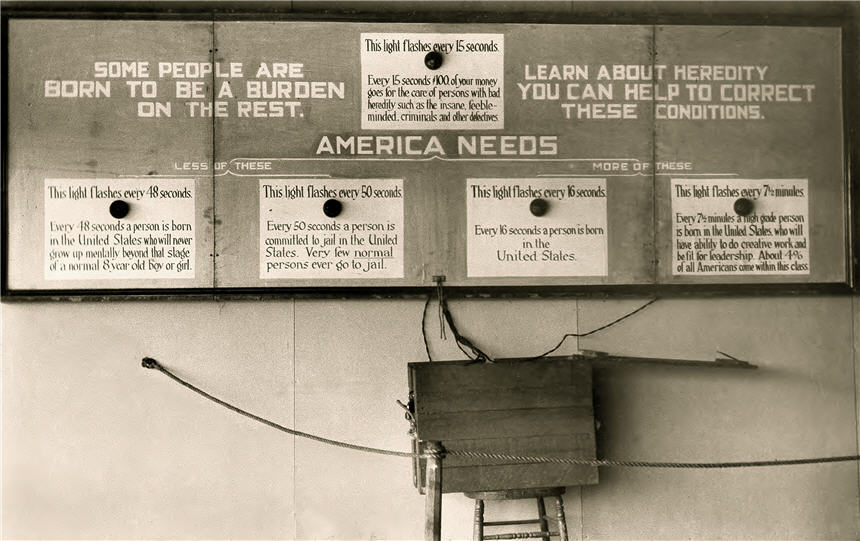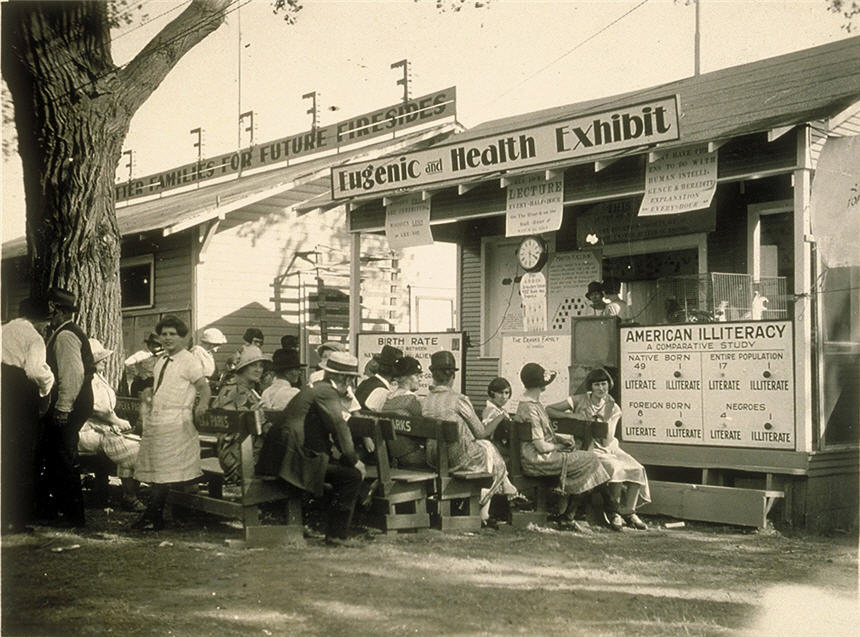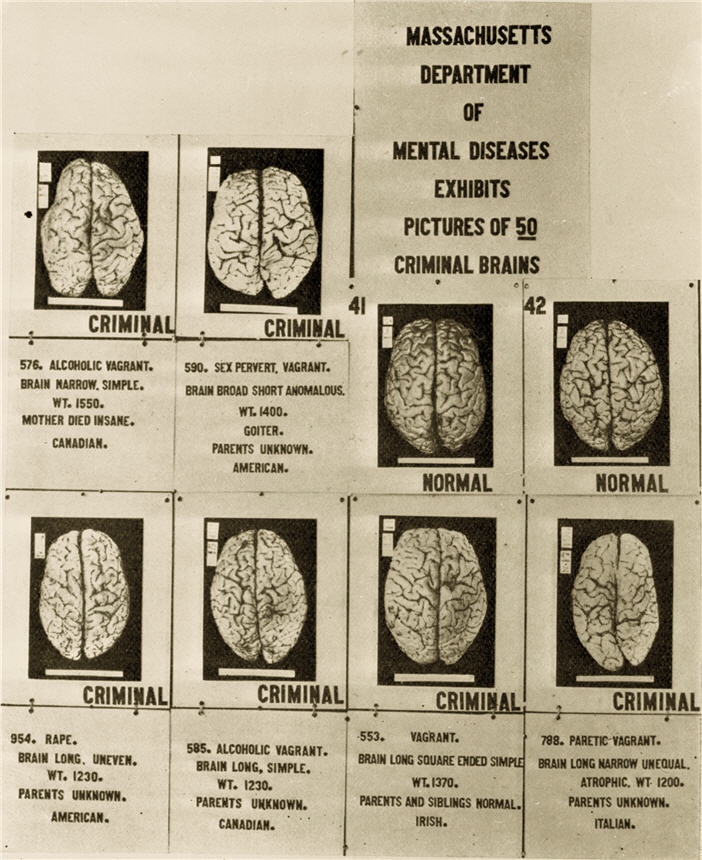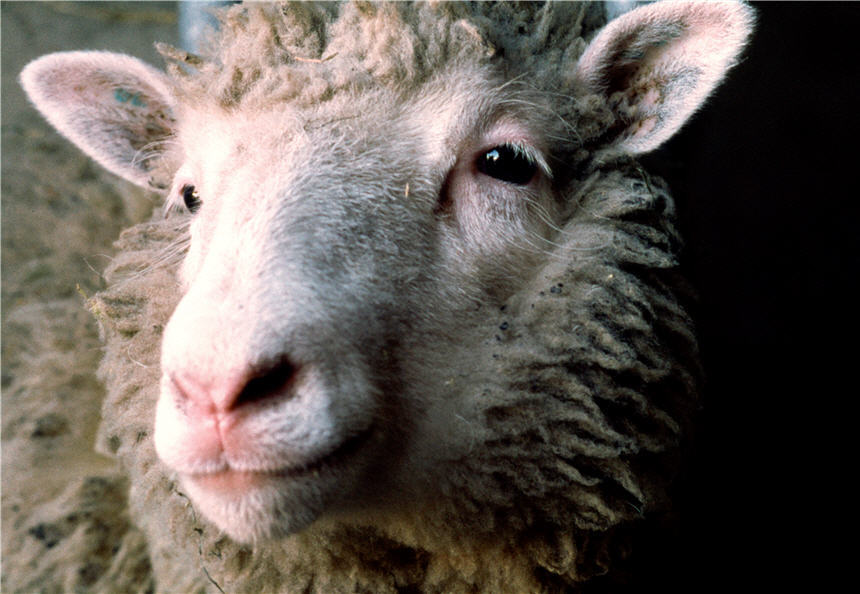The myth of Frankenstein continues to resonate into and beyond the 20th century as science and technology gain ascendancy in American social and cultural life. Although many individuals welcome the changes caused by scientific advances, some worry about society’s ability to retain control of technologies that challenge their understanding of what it means to be human. Mary Shelley’s story offers a compelling framework for the public to articulate its uneasiness about scientific ambition and the nature of scientific responsibility.
“Can Science Raise the Dead?” Popular Science Monthly, February 1935
Courtesy Popular Science Monthly
The possibility that humans could be successfully revived from the dead generated considerable popular enthusiasm in the 1930s. The magazine Popular Science appealed to the American public’s fascination with articles about scientists’ efforts to reanimate the dead.
-
Perfusion pump assembly from The Culture of Organs, 1938
Authors: Alexis Carrel (1873—1944) and Charles A. Lindbergh (1902—1974)
Photographers: Louis Schmidt (ca. 1866—1939) and Joseph B. Haulenbeek
Courtesy National Library of Medicine
In the 1930s, aviator Charles Lindbergh and the Nobel Prize-winning French surgeon Alexis Carrel, joined forces to develop a perfusion pump, or “glass heart,” capable of maintaining organs and tissues outside the body by providing them with a supply of oxygenated blood.
Display from a “Fitter Families Contest,” ca. 1926
Courtesy American Philosophical Society
The 1931 Frankenstein film illustrated the hold that “biological determinism” had on many Americans. Inferior genes were believed to explain social unrest and rising crime rates, rather than environment or education. Displays at state fairs and other venues explained the economic drain created by people with “inferior” genes, and touted the benefits of treating reproduction “scientifically.”
Eugenic and Health Exhibit, Fitter Families Contest, Kansas Free Fair
Courtesy American Philosophical Society
Many Americans supported the eugenics movement, which encouraged people with “good” genes to reproduce and tried to prevent the “unfit” from having children. In the 1920s, American state fairs hosted “Fitter Families” and “Better Babies” contests, in which families competed—like Holstein cattle and Jersey cows—for “best in show.”
Massachusetts department of mental diseases exhibits pictures of 50 criminal brains, 1921
Courtesy Cold Spring Harbor Laboratory Archives
In her novel, Mary Shelley’s monster turns to violence after he is abandoned by his creator and rejected by human society. In the 1931 film, Frankenstein, the monster is violent because he has received the brain of a criminal instead of the brain of a distinguished scientist.
During the first part of the 20th century, researchers looked for physical markers of criminality in the brain and other parts of the body.
Dolly, the world’s first adult sheep clone, 1997
Courtesy Science Source Images, © 2012 Photo Researchers, Inc. All Rights Reserved
News reports in 1997 that Scottish researcher Ian Wilmut had successfully cloned an adult sheep (named Dolly) provoked world-wide speculation about the implications of this dazzling new technology for humans. Cloning, perhaps more than any other area of biomedical research raises profound issues about human identity and scientific responsibility.
Contemporary scientific advances raise difficult ethical and policy questions. Although the scientist Victor Frankenstein failed to take responsibility for his misbegotten monster, Mary Shelley has for two centuries offered the Promethean possibility that humanity could make responsible choices.



